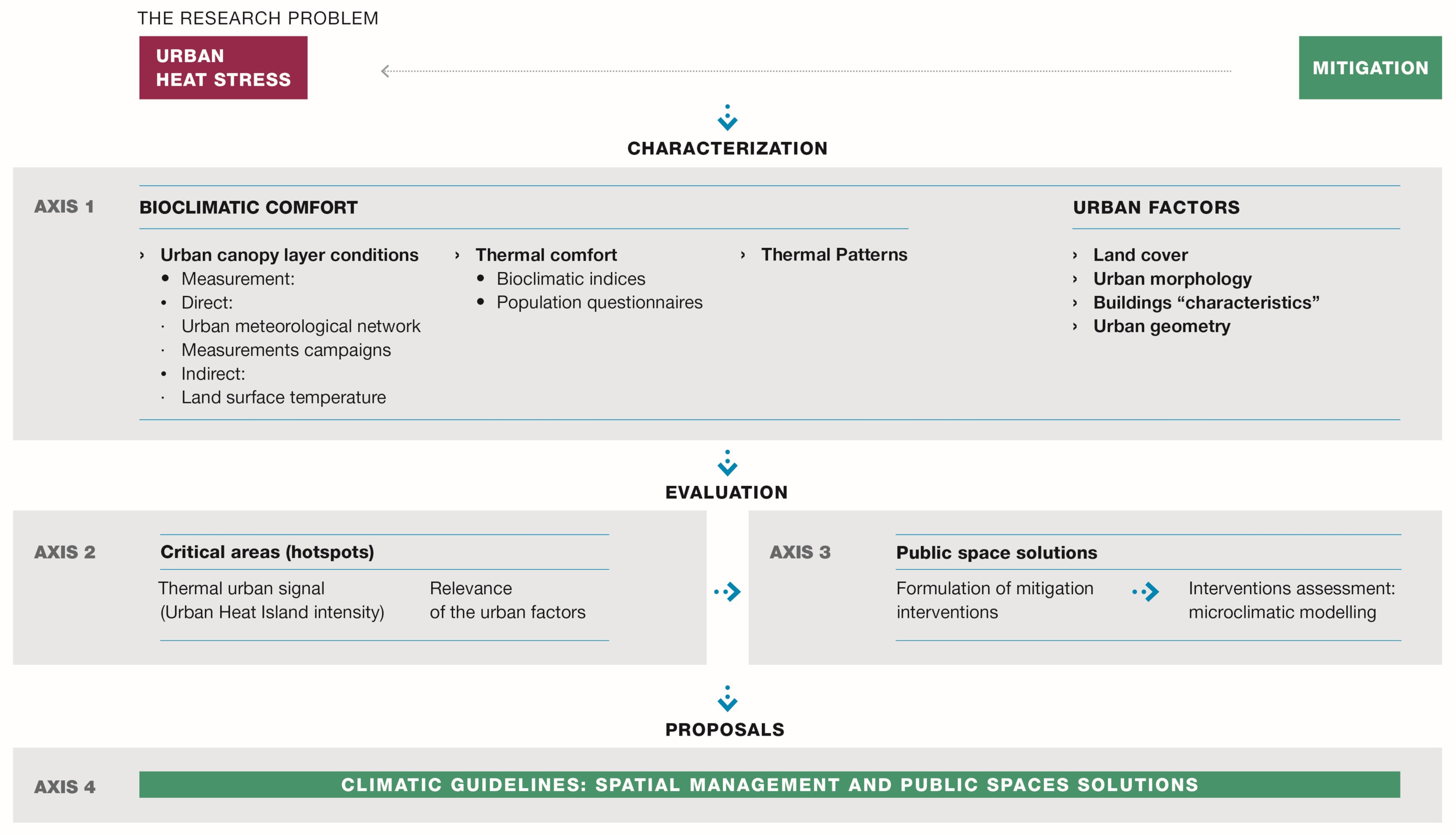AXIS 1: Characterization of bioclimatic conditions and urban factors
Task 1.1 - Data collection and observation
Establish an urban climatological network and carry out itinerant measurements to collect meteorological data in locations representative of morphological conditions and urban fabric. Additionally, a dataset of surface temperature imagery will be compiled, ensuring that it encompasses typical atmospheric situations.
Task 1.2 - Bioclimatic conditions
The bioclimatic conditions will be evaluated by calculating thermo-physiological indices, namely UTCI and PET, based on meteorological data, and on the thermal sensation of the residents in the area, obtained through questionnaires conducted by the University of Cabo Verde.
Additionally, bioclimatic indices will be benchmarked, and the comfort classes within the area will be evaluated.
Task 1.3 - Urban factors
The urban morphology and buildings will be characterized and urban geometry indices relevant for energy and radiation balances as well as for natural ventilation will be calculated.
To address the potential impact of surrounding vegetated areas and bare soils on the built-up areas, a comprehensive characterization will be conducted.
The survey of building characteristics (eg. height, materials, and colors) will be carried out with the active involvement of the University of Cabo Verde community.
AXIS 2: Identification of critical areas
Task 2.1 - Involves identifying critical areas within the "Palmarejo area" by employing spatial modeling techniques applied to the data collected in Axis 1, which includes meteorological elements and thermal comfort conditions.
Task 2.2 - Analyzing the spatial and temporal relationship between thermal comfort patterns and urban factors will help to point out the influence of these factors.
AXIS 3: Evaluation of intervention measures in public space to mitigate heat stress
Task 3.1 - Identification and selection of measures to be implemented in critical areas, through the utilization of the Nominal Group Technique.
Task 3.2 - Evaluation of the impact of the measures on thermal comfort: will be conducted by estimating their effects using the ENVI-met microclimatological model. Results from the simulations will be compared, to evaluate its effectiveness.
AXIS 4: Proposals
Task 4.1 - Formulation of Hypotheses for Mitigating Measures
This task involves developing hypotheses for potential mitigating measures that can address the identified challenges related to heat stress in public spaces. By fostering collaborative efforts among stakeholders, the ultimate aim is to explore innovative and effective strategies that can enhance thermal comfort and effectively mitigate the impacts of excessive heat in public spaces. This will involve considering various elements of urban design, such as shading, green infrastructure, ventilation, and materials, to create more resilient and climate-responsive urban environments. Through a multidisciplinary approach, the goal is to develop practical and context-specific solutions that prioritize the well-being and comfort of the public while promoting sustainable and resilient urban development.
